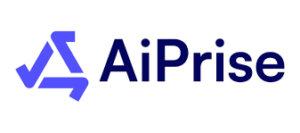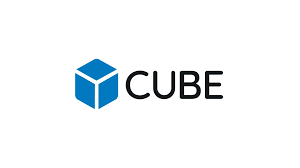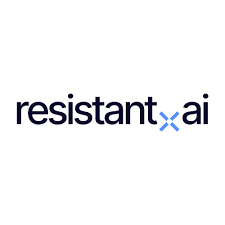Avoiding Ethical Pitfalls: How Smarter Conflict Checks Protect Firms and Clients
In the professional services world, reputation is everything. One overlooked conflict of interest can undo years of relationship-building, trigger regulatory scrutiny, and lead to costly legal disputes. For firms across law, accounting, and consulting, avoiding ethical pitfalls is no longer just a compliance checkbox. It is a core part of strategic risk management. Conflict checking, once considered a routine administrative task, has evolved into a crucial safeguard for both firms and clients.
The stakes are high. Conflicts of interest accounted for 4.79% of all malpractice claims, representing over 22% of total losses and defense costs. Studies indicate that up to 40% of malpractice suits contain some form of conflict allegation. These numbers are not just abstract statistics. They represent real reputational and financial risks for firms that fail to implement robust systems. Avoiding ethical pitfalls is essential to maintaining trust, protecting clients, and sustaining business growth.
The market for conflict checking technology is growing quickly. In 2024, spending on law firm conflict check software reached approximately USD 372.7 million, with projections estimating growth to USD 403.5 million by 2025. Broader forecasts suggest the sector could hit USD 2.8 billion by 2032, reflecting a compound annual growth rate near 9.8%. These numbers indicate that firms are investing heavily in technology not just for efficiency, but to proactively mitigate risk.
The Risk Behind Relationships
Manual conflict checking has long been a standard practice in law firms and other professional services. Yet the complexity of modern business relationships often exceeds what manual systems can safely manage. A single multinational client may have dozens of subsidiaries, joint ventures, and affiliated entities. Without automated systems, a simple oversight could create a serious conflict of interest.
Financial and professional services firms face similar pressures. In banking and insurance, conflict detection is a key part of regulatory technology solutions that prevent insider trading, fraudulent practices, or breaches of fiduciary duty. Automated conflict checks allow firms to capture hidden risks and maintain transparent records of compliance activities, demonstrating diligence to regulators and clients.
The Tech Behind the Checks
Technology now enables firms to identify conflicts with far greater speed, depth, and accuracy than human teams alone could achieve. Among the most widely used solutions are Intapp Conflicts, Aderant Conflicts, and iManage Conflicts Manager.
- Intapp Conflicts integrates client, matter, and relationship data across an organization, automatically flagging potential conflicts before engagement begins.
- Aderant Conflicts offers real-time searches across multiple databases, generating detailed reports and risk assessments. It is especially favored by large, global firms handling high client volumes.
- iManage Conflicts Manager connects with document management and CRM systems to provide a unified view of client relationships and prior engagements.
These tools do more than reduce administrative workload. They actively prevent firms from overlooking potential conflicts, ensuring that even complex, multi-entity engagements are flagged and reviewed. By leveraging automation, firms can identify risks early, avoiding costly mistakes and maintaining client trust.
Data, Trust, and Reputation
Trust is the lifeblood of professional services. A single missed conflict can lead to reputational damage that lasts for years. About 89% of law firms with 50 to 99 lawyers now use conflict checking software. The smallest firms lag behind, with nearly 60% of solo practitioners still handling conflict checks manually. Technology adoption is not only a risk-mitigation strategy. It can also serve as a competitive differentiator, signaling professionalism and reliability to clients.
Automated conflict checking also supports auditability. Regulators increasingly expect firms to document how conflicts are identified, reviewed, and resolved. Digital systems generate a traceable record of each check, providing defensible evidence in the event of client complaints or regulatory scrutiny. In today’s regulatory environment, being able to demonstrate that a firm is actively avoiding ethical pitfalls is just as important as preventing conflicts in practice.
The Business Case for Automation
Beyond compliance, conflict checking systems provide tangible business benefits. They allow firms to onboard clients more efficiently, speeding up approvals and improving client experience. Analytics built into modern conflict checking systems can reveal hidden connections and opportunities for cross-selling, helping firms leverage their client network strategically.
The broader regulatory technology market, which encompasses conflict checking software, is projected to surpass USD 80 billion by 2033, with annual growth rates exceeding 20%. As compliance budgets expand, firms are shifting from reactive approaches to proactive risk management. Conflict checking sits at the intersection of ethics, technology, and business strategy, protecting both the firm and its clients while enabling smarter decision-making.
A New Standard for Ethical Practice
Avoiding ethical pitfalls used to mean simply following a checklist. Today, it means embedding ethics into digital systems that can learn, adapt, and protect. Conflict checking software has evolved from a back-office function into a strategic compliance tool that safeguards reputation, ensures integrity, and reinforces client trust.
For firms navigating complex regulatory landscapes and increasingly interconnected client ecosystems, investing in smarter conflict checking is more than a precaution. It is a standard of professional excellence. Avoiding ethical pitfalls is no longer reactive damage control. It is a proactive commitment to integrity, trust, and long-term success.
Call to Action
Firms that want to stay ahead of regulatory pressures and protect client relationships should evaluate their conflict checking processes today. Adopting advanced tools like Intapp, Aderant, or iManage can turn compliance from a burdensome obligation into a competitive advantage. In a world where one missed conflict can have lasting consequences, smarter conflict checking is essential.





